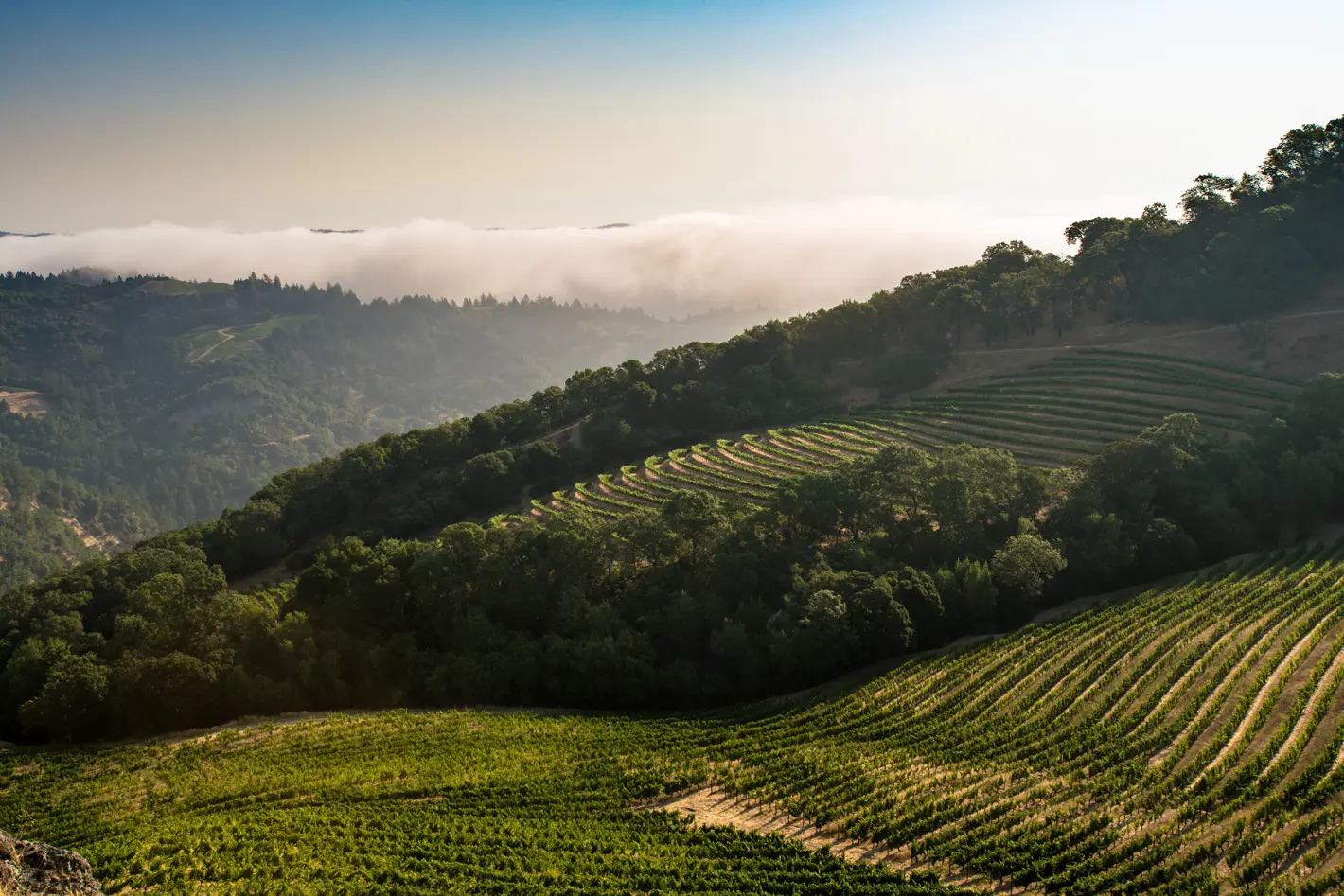
This is where the story really begins. Chris feels that Brett, in small parts-per-million, adds tremendous complexity and cohesion to a wine.
“Winemaker Chris Howell, Cain Winery, and the Taboo Subject of Brett,” Diary of a Winebuyer—the Taste, Terroir, and People of Wine, January 2013:
Recently I had the opportunity to visit Cain Winery, and taste their wines with its longtime winemaker, Chris Howell. Chris has been at Cain for the past twenty three years, starting there as a consultant in 1990. In the past, I had dismissed these wines, as having muddied flavors, and rustic tannins, particularly from their flagship wine, Cain Five. But over the last few years, the wines here definitely improved. Today, these wines really impress me for their elegance, beautiful complexity, and silky, fine tannins. I wanted to find out what had changed there.
Of course, I began by telling him that I think he is making the best wines I’ve ever had from the winery. I ask him what he feels he is doing differently, from, fifteen years ago, when the wines weren’t nearly as clean and polished. He answered by saying “Not much has really changed in my winemaking. Small things mostly.” That, and the vineyard had been replanted, with the rows being planted closer together, and the vines are trained low to the ground with vertical shoot trellising, “which allows us to pick earlier than anyone else; without over-ripeness.”
He hesitated. And then began again, this time in earnest, explaining that for the most part he had cleaned up the cellar of brettanomyces. Brettanomyces, often referred to as Brett, is a bacteria that infects wine, gets embedded in barrels, and is easily transferred from barrel to barrel, and tank to tank. A whole cellar can quickly be infected through careless cellar practices, and even if the wine is sterile filtered, the aromas and flavors of brett remain behind. Brett tends to obscure the fruit in wine, and give wine muddy, musty, re-fried bean aromas and flavors. The English, who have learned to appreciate Brett, used to describe it as giving a wine Barnyard aromas. The French, being more direct, simply described Brett as Merde (shit). Wineries have spent hundreds of thousands, and some big wineries have spent millions of dollars, trying to eliminate it.
This is where the story really begins. This is where he drops the bomb. In the future he said he wants to increase the amount of Brett from what is currently is in the wines. Chris feels that Brett, in small parts-per-million, adds tremendous complexity and cohesion to a wine. These are statements that are unthinkable to most winemakers, and I have to say, it’s not what I wanted to hear having recently become a big fan of the winery.
To this he added a note of caution: before he would open his cellar to brett, he wants to better understand it, and to have better control of it. “You can’t add a little, and expect it not to propagate,” he added. He admits that there is not a lot known about Brett, if for no other reason that researchers don’t tend to study what most seek to eradicate, and can do so already.
Chris expounded on a feeling I’ve increasingly had over the past few years: Today’s winemakers have sole focus on making a perfect wine, by selecting perfectly ripe bunches, and from that, the most perfectly ripe berries. Wines, as a result, are becoming much less interesting, and ultimately beginning to tasting all the same. He wants his wines to be a holistic entity, reflecting the vineyard, and the vintage; carrying with it, a much wider array of flavors, like more red fruits, earth, and some herbal components. There should be elements that make the unique and of a particular place, rather than the current quest for the perfectly ripe and ultimately homogeneous fruit character. He says he is using fewer new oak barrels, rather than running the risk of over-oaking his wines. His ideal of perfection is to create a wine of great character, with great texture, and he thinks brett can be a tool to get there.
Chris is very cerebral, and is constantly evaluating, probing, and fine tuning the winemaking at Cain. This is a common thread I’ve found among many of the very best winemakers. But deliberate introduction of brett, this was a lot to swallow. I, for one, will certainly be tuned into Chris’ work in the future. He is definitely not a trend follower and is certainly is blazing his own trail here. Maybe he will be the one who can learn to use, and tame Brettanomyces. The results will be intriguing to watch and I’m rooting for his continued success.
By Dean Alexander

